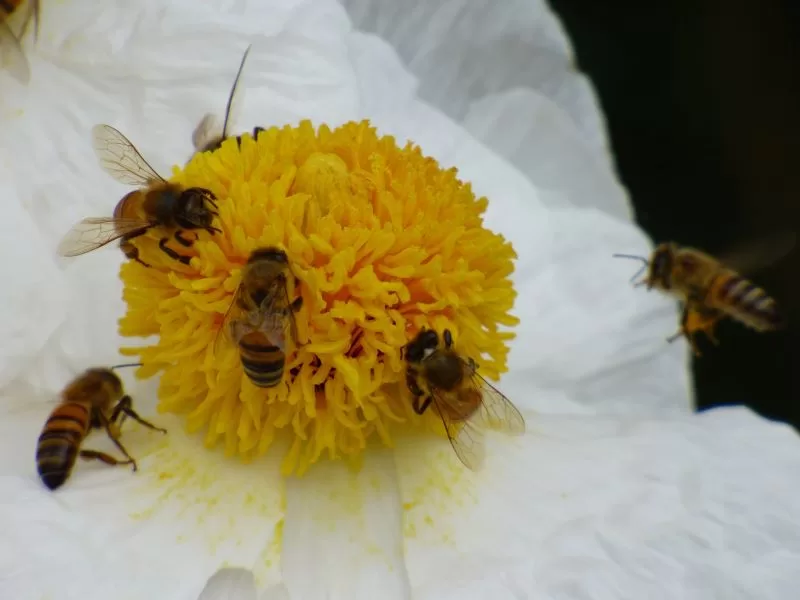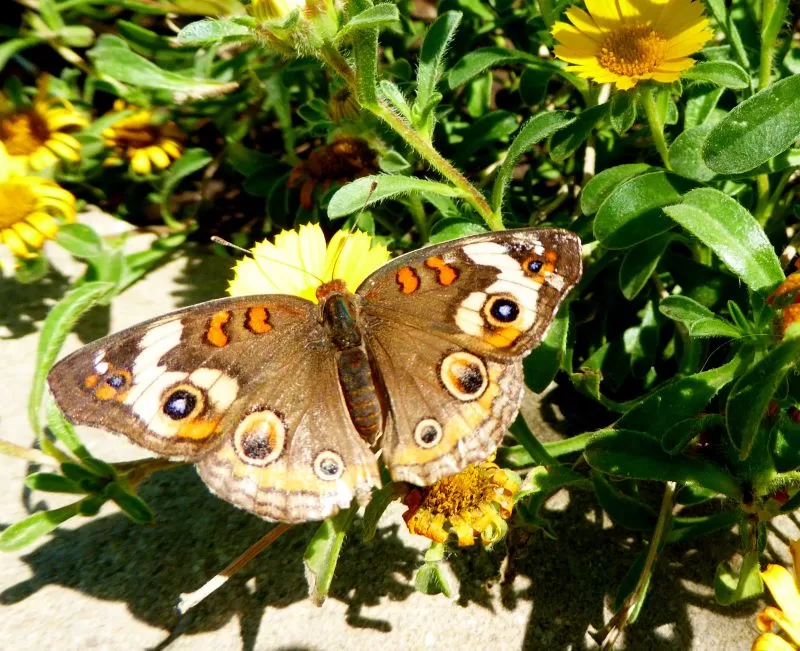
Neither need you tell me,” said Candide, “that we must take care of our garden.”
“You are in the right,” said Pangloss; “for when man was put into the garden of Eden, it was with an intent to dress it: and this proves that man was not born to be idle.”
“Work then without disputing,” said Martin; “it is the only way to render life supportable.”
—Voltaire, Candide
While much of the country is gripped in the icy embrace of winter, spring is already stirring in the Santa Monica Mountains. The ceanothus is in bloom, water is running in creeks and springs. Wildflowers like shooting stars and California poppies are beginning to appear. There is the tantalizing sense that Eden is somehow in reach here, no matter how long the exile from paradise.
All the bleak and dire news in the world can’t diminish the hope that comes with the rain, and in our gardens we have a small but real opportunity for conservation and grassroots activism by providing safe, earth-friendly habitat for wildlife, birds, butterflies, bees, and humans.
Planting a butterfly garden now will ensure it is in bloom during peak butterfly season in late spring but will also help year-round pollinator species, including bees, make it through next winter.

Many birds overwinter in the Santa Monica Mountains, and migratory birds are already arriving. Some are here for spring nesting season, others are passing through on their way farther north. Providing a safe harbor with water and shelter for birds—resident, seasonal and migrant—is an easy and rewarding way to help conserve wildlife.
A shallow bird bath that is constantly kept full of clean water is one of the best ways to help birds, but making sure the location is safe from cats is essential. Native shrubs and trees provide the best habitat for birds and wildlife, but any trees and shrubs are better than none. Research has repeatedly shown that the kind of yard with nothing but a patch of lawn and a hedge is a biodiversity desert.
Nesting boxes are another way to help native birds. It is important to pick the right kind of box and place it in the right location, but plenty of guidance is available online at sites like the Audubon Society and the Cornell Bird Lab.
Bluebird boxes are ideal not only for bluebirds but also the oak titmouse, the tree swallow and the Bewick’s wren. Barn owls are happy to set up shop in outbuildings or even attics, but also appreciate nesting boxes—provided honeybees don’t move into the box first. Western screech owls depend on native oaks for shelter, but are also willing to take up residence in bird boxes. Great horned owls are opportunists who recycle the old nests of other raptors or crows in any tree, even sometimes palm trees. They are less likely to make use of a nest box, but sometimes appreciate a nesting platform, and almost all raptors—nocturnal and diurnal appreciate a raptor pole to hunt from, or a tall tree.
Property owners with room for oaks in their gardens have the opportunity to create habitat not just for raptors but for an incredibly wide range of species. Growing an oak may sound like an intimidatingly long term project, but they grow remarkably fast when they are saplings. A coast live oak can grow as much as two to three feet a year at the beginning.
All types of native oak—even valley oaks—are easy to start in pots from acorns. So are California black walnuts, holly-leaf cherry, and bay laurel—all essential Chaparral trees. Just don’t leave them in their pots too long. All of these species depend on a deep taproot and won’t thrive if that root doesn’t have room to grow.
Late winter/early spring is also a good time to try rooting cuttings or growing root divisions from local native plants. Mugwort, black and purple sage, buckwheat, ceanothus, penstemon, golden currant, and toyon berry are all easy to grow from cuttings.
Hummingbird sage, with its pineapple-scented leaves and beautiful purple flowers, grows well from root cuttings. So do some of our native ferns, like polypody and bracken.
Coyote brush, California bush sunflower, and laurel sumac—three critically important coastal sage scrub plants—readily grow from seed. So do many of our most beautiful wildflowers, including poppies, lupin and clarkia.
Many other native species, including some that are rare or hard to propagate, can be found at the Theodore Payne Foundation in Sun Valley or at Bob Sussman’s Matilija Nursery in Moorpark. Or plan a day trip up to the Santa Barbara Botanic Garden for inspiration followed by a shopping spree at the garden’s excellent nursery.
In the rush to replace lawns with drought tolerant options, many local residents have inadvertently turned their gardens into deserts. There has been an alarming rush towards ripping out mature landscaping and replacing it with succulents, some of which are surprisingly toxic. Plants like pencil cactus, agave, and sago palm are popular because they are strikingly beautiful and require little maintenance, but they can cause serious allergic reactions in humans and pets. A single sago palm seed can kill a large dog or a child, if ingested.
Even non-toxic succulents are often poor habitat for native wildlife. Native plants are a much more environmentally friendly option, and while grass is not ideal from a drought perspective, it is still better than gravel or artificial turf. The right kind of grass and the right watering schedule can greatly reduce the amount of water a lawn requires. And unlike artificial grass or gravel, living grass sequesters carbon. If it isn’t treated with pesticides, it provides habitat for a number of invertebrates, as well as the birds that feed on them.
One of the most important contributions to the environment we can all make is eliminating toxic pesticides from our homes and gardens. Excluding rodents instead of poisoning them, and making sure accidental food sources like garbage cans and pet food are cleaned up and secure can eliminate the need for rodenticides.
Eliminating herbicides like Roundup and toxic insecticides helps every part of the local ecosystem, from soil organisms, to bees and butterflies, to humans and pets. The non-profit organization Poison Free Malibu offers guidance on how to rodent-proof and live poison free: www.poisonfreemalibu.org.
Through the hard work of local activists, homeowners, families, and businesses, Topanga is officially a National Wildlife Federation certified Wildlife Friendly Community. That’s something neighboring communities could do, too. Leaving or creating “wild” areas, and providing water and bird-and butterfly-friendly plants is easy and can help create islands of habitat even in the urban areas.
All residents of the Santa Monica Mountains are stewards of our natural resources. We are blessed to have a national park as our backyard and the ocean at our door because activists worked tirelessly to protect those resources. Every canyon, every creek, every road leads to the sea. Topanga has a tradition of valuing those resources, but it’s up to all of us to work together to cherish and protect the things that make this place special. Now is a good time to plant the seeds of tomorrow.
In the garden of my heart, the flowers of peace bloom beautifully.
—Thich Nhat Hanh, “The Great Bell Chant,” a Buddhist Prayer for the End of Suffering












